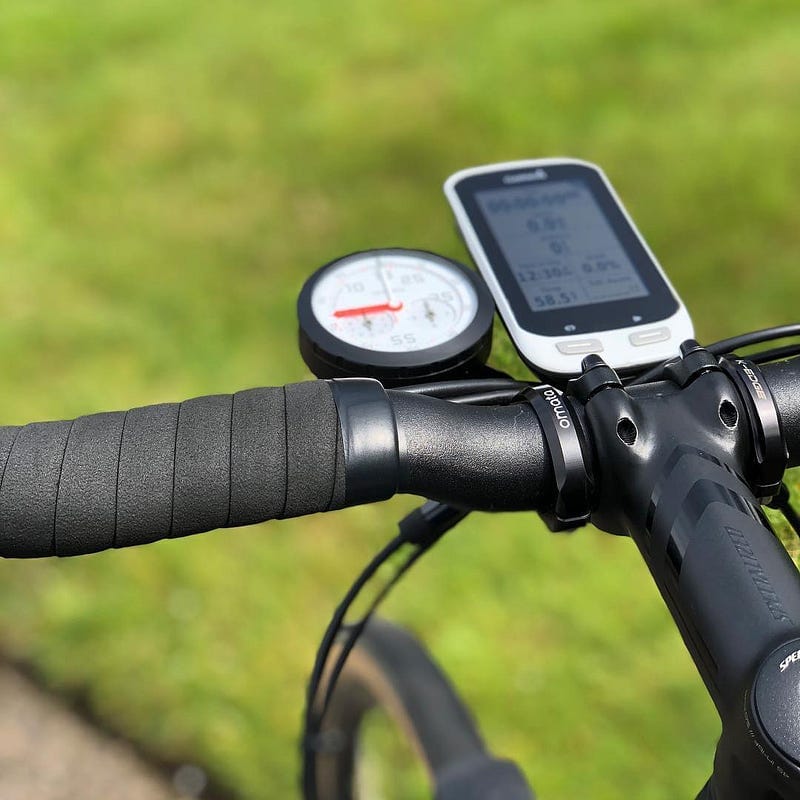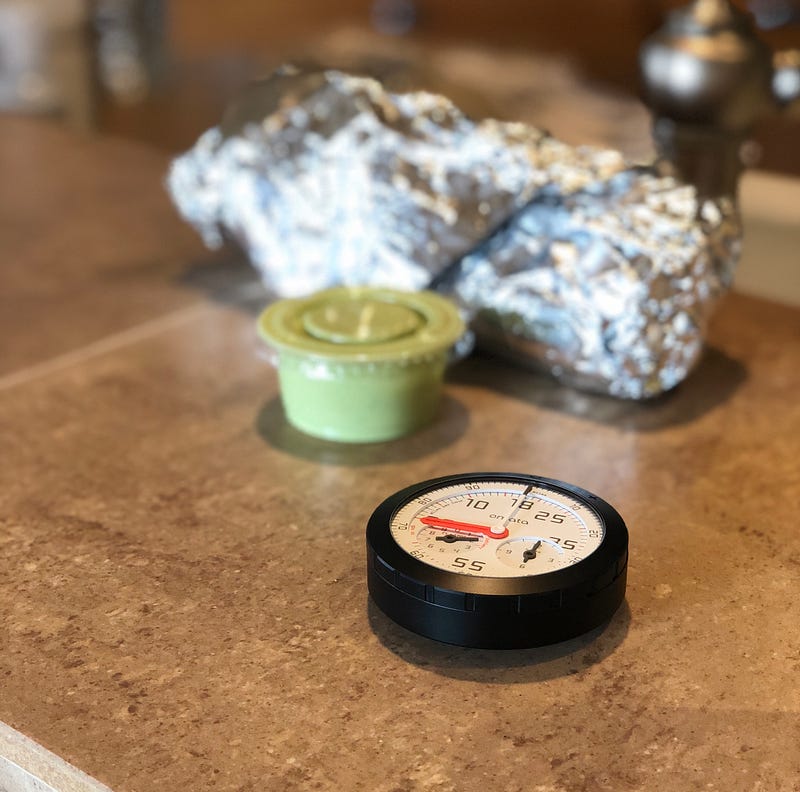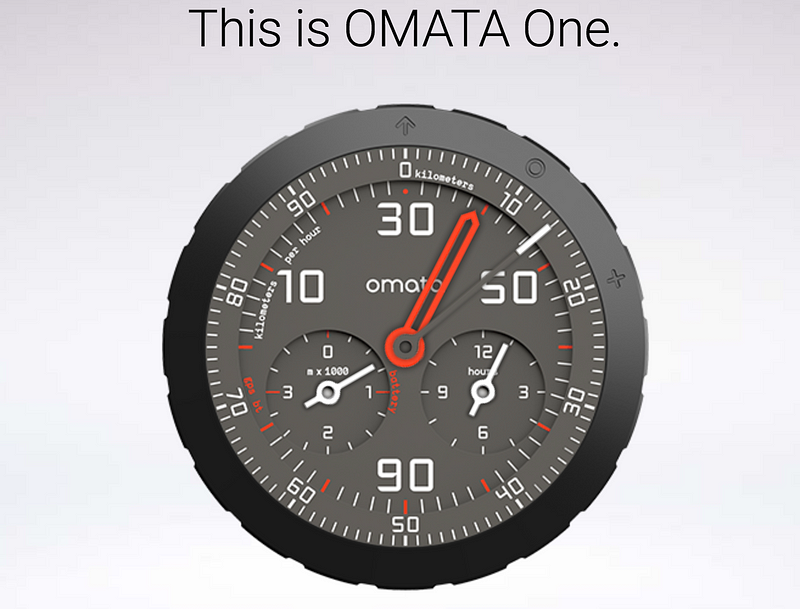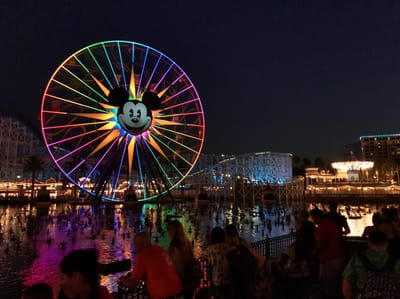My first ride with the Omata One


A couple years ago, I pledged to the Omata One Kickstarter, and it recently arrived on my doorstep. I loved the idea behind it: make a pleasing high-end object that looked and operated like an anachronistic mechanical watch, but at the same time matched the capabilities of digitally-obsessed cyclists through the use of hidden GPS chips and bluetooth capabilities.
Taking the Omata One out of the box, it was clear this is a well-designed object. It has a nice weight to it, feels like it was carved from a solid piece of metal, and quickly charged up on a USB-C port on the underside. There are no buttons, just a big notchy outer ring with only three settings that clunk satisfyingly into place: out on a ride, turned off, or connecting to your phone. Once charged, it quickly paired to my phone and set up was a breeze.
Ride impressions
For the first test ride, I wanted to compare it to my high end Garmin Edge Explore 1000. I was impressed the Omata shipped with its own aluminum mount that was almost exactly like the K-Edge mounts I use on all my bikes.

The dials look great and bounce around smoothly. It resembles a pretty complicated watchface, but after a few minutes you quickly get that the big red needle is your current speed, the white “second hand” is total distance, while the smaller dials track elevation climbed and total hours of riding.
Accuracy-wise, the numbers on dials were close to what my Garmin was displaying, with maybe 5% variance at most, but it might just be me getting used to the inexact nature of reading needles on dials. Post-ride, I downloaded my ride data to my phone and instantly uploaded it to Strava.
Impressions
Overall, I love the Omata One. It’s a beautiful bike computer with all the bells and whistles of a modern bike computer but with some data largely hidden from view. Strangely, the feature I most enjoyed was the lack of precision inherent in using an Omata One. My Garmin can show me 14 pieces of data on one screen, each with two significant figures of precision, and I realized during my first ride that instead of monitoring data, enjoying the ride and just occasionally glancing down at the needles was a better approach.
Where my old Garmin feels like a bar-mounted supercomputer tracking my every move, giving me more feedback than I’d ever need, and constantly demanding my attention, the Omata feels like driving an early 1970s air-cooled, carbureted Porsche 911 that offers up direct basic feedback and is mostly about enjoying the journey to wherever you’re going.
Pros and Cons
- It’s gorgeous and feels like an heirloom I can pass down to my grandchildren someday, like a fine watch.
- While it tracks enough data to be comparable to any typical GPS bike computer, but it only shows you a subset of information and though I found it refreshing, it wouldn’t be enough for people that race bikes or do intense training (but that’s clearly not who it’s designed for).
- Amid high-end, comfortable bikes built for gran fondos and high-end, comfortable clothing like Rapha’s, the Omata One will definitely find a home among fans of either of those things. Heck, I just hit age 45, I only have time to ride with a couple friends once or twice a week, and I’m in the midst of selling off my old race bikes, so this was practically designed especially for me and meshes with my new outlook to riding for the pure fun of it.
- One minor downside is they only offer metric units in a dark design and imperial units in white, and I wished my imperial Omata was in the dark design.
- The biggest drawback from my first ride was the data transfer from the Omata to my phone took about 2 minutes and had to be manually done at the end of a ride. Hopefully future firmware updates make that process happen more quickly, or automatically in some way to cut down on the delay (My old Garmin has a WiFi chip that auto-joins the network whenever I roll up to my garage, then auto-uploads my data to Garmin and Strava in a few seconds).
As I get older, I’ve stopped wearing a heart rate strap on every ride and my current bike lacks the power meter crank to measure the forces I’m exerting (at sub-second resolution) I used to have on all my race bikes. I no longer ride stiff, harsh lightweight carbon pure race bikes either. I’ve got an all-day, all-conditions, all-around gravel bike that replaced three different bikes in my garage.
As I no longer need current and max watts and heart rates on my Garmin, the Omata One makes a lot more sense to how I’m riding these days. I love the convenience of still having Strava track all my rides, but during the ride itself, I rarely need to know more than how far I’ve gone or how long I’ve been out riding and the Omata really delivers in that respect. I don’t feel like I’m missing anything and I’m going to put my Garmin away and move exclusively over to the Omata.
My favorite thing about the Omata is as beautiful of an object it is, the one thing it taught me to do was instead look up and enjoy the ride all around me.

Subscribe to our newsletter.
Be the first to know - subscribe today



